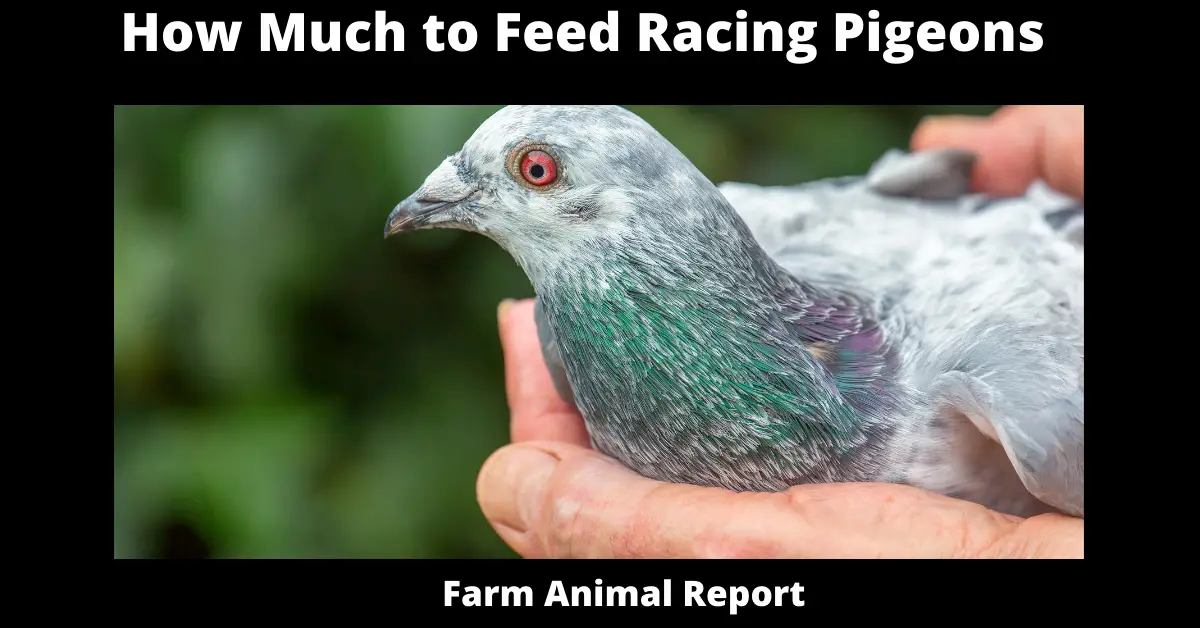What do Racing Pigeons Eat?
How much to feed racing pigeons – Birds and pigeons have a specific diet, and you cannot offer them anything to eat. A racing pigeon is slightly different from the rest of the other breeds. There is a difference between pet pigeons and racing pigeons. Just like human beings, birds and pigeons need the energy to do work and survive.
Pigeon racing is a sport of flying birds where pet pigeons race and keep on flying for a specific time. For extra flight, these birds need specific pigeon food that will help them stay afloat for some extended time. What do Racing Pigeons Eat?
Pigeon feeding is an art of science that makes you provide these aviator athletes with a mixture of balanced diet throughout the week. You need good pigeons and great genetic advantages along with high-quality pigeon feeding techniques that will keep them in the air from morning till the start of dusk.
It might be a bit difficult in the beginning to know about the exact amount and time of the sustenance, but after reading this piece of writing, you will have enough knowledge to train and prepare your aviator athletes for winning the racing season. What do Racing / Sprint Pigeons Eat?
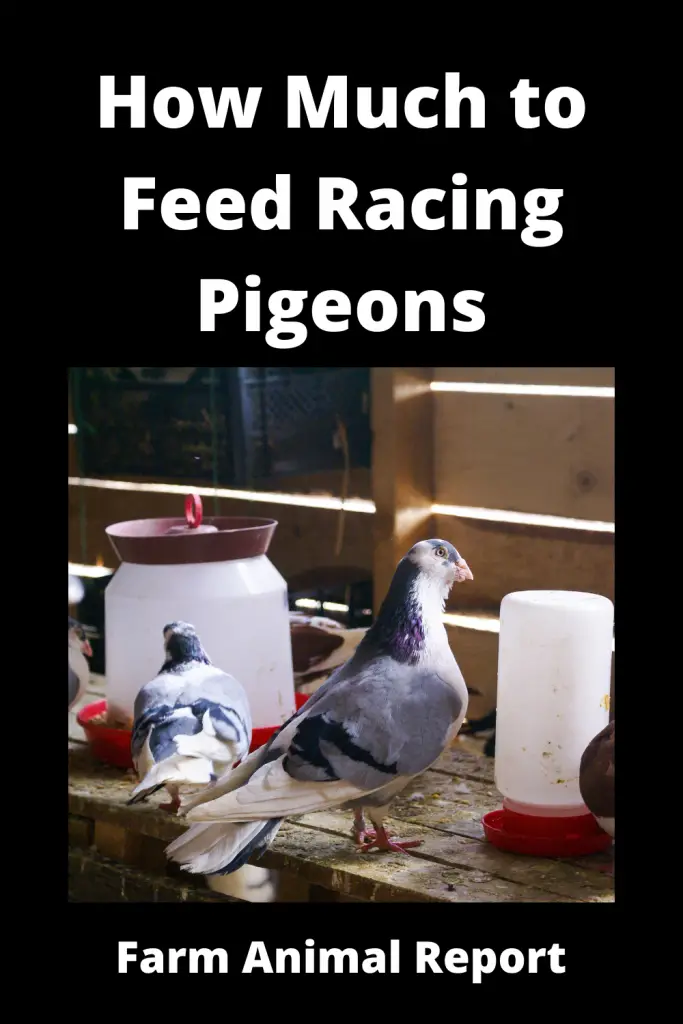
How Much do Racing Pigeons Eat?
Every season requires different feeds, and you need to make a nutrition program for pigeon feeding according to the weight of the bird. Many fanciers use corn and a mix of other grains to start feeding them to young birds. A pet bird is different from pigeons as pets are not reared for the race.
See Amazons Supplies and Educational Resources for Racing Pigeons
But when you want to rear aviator athletes, birds and pigeons need a balance between healthy food and training. Eating good pigeon food will make them develop stamina for staying for a longer time in the sky and performing up to the mark. Pigeon feeds are a mix of different grains, and you can offer 30 grams of food per bird in providing them with protein and fat.
What is the Difference Between a Racing Pigeon and a Homing Pigeon?
Race pigeons or racing mix have been made from the domesticated or homing breed. The domesticated birds and pigeons differ in weight and eating habits. A racing pigeon is different from a homing bird. Homing is the term used to define the message carrying routine of the birds. Homing birds were used in times of war and peace for communication. They could fly for miles and provide the message from one place to another and come back at the same time to the first location.
The racing breed, on the other hand, is different from homing messengers. The pigeon feeding for these racers is a mixture of corn and various other grains along with small pebbles to grind them in the stomach. They eat the feed which is a mixture of fat and protein to provide the energy to cover 200 to 400 miles in a day. These racing aviators need extra energy, and a half meal is not a good guess for a balance of pigeon food. Their feeding increases when they are about to lay eggs.
What do Pigeons like to Eat?
You can guess any diet as pigeon food for parents and chicks. But the meal to feed birds and pigeons should be a mixture of corn and balanced in different variants of bird feed. Pigeon feeding habits change during and after breeding. You need fresh water, rice, and wheat to provide energy for different age groups.
How much does a Pigeon eat per Day?
Birds and pigeons like to eat complex ingredients from insects to dairy products and various seeds and grains which you also consume. The pigeon feeding starts in the morning, and you need to focus on healthy feed for them as per their weight and the amount of energy they need for race training. A perfect balance can be obtained by offering them a mixture of 30 grams per flyer.
Pigeon food, at the same time, should be a mixture of protein and healthy ingredients to let them rear young birds. Feeding pigeons turn a different turn when they have to do daily exercise.
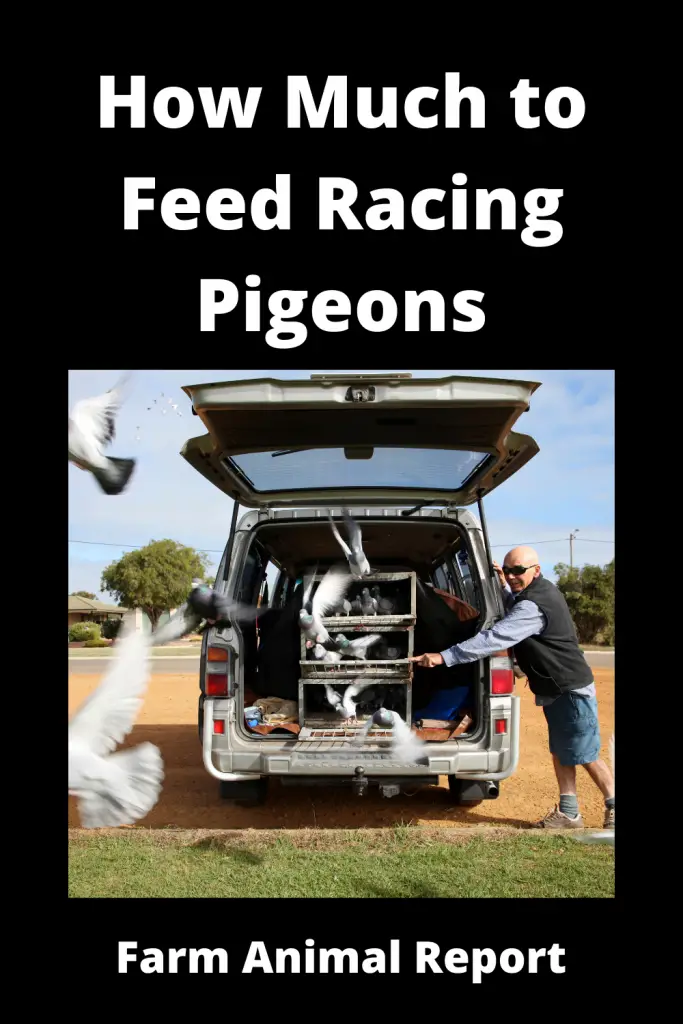
How Much do you Feed a Sprint Pigeon?
Sprint racers cannot survive half ounces of pigeon food. The races and training sessions make them eat more. Old birds cant do extensive exercise and need less feed. the pigeon feeding in the evening and eating in the morning need to be a bit extra than the food you offered them last week. The training takes a toll on healthy birds and pigeons, and they need extensive energy to race from one point to another.
You should know how many birds you have and offer them more than half-ounce food two times a day to provide energy for sprints.
How do you Feed a Racing Pigeon?
Pet pigeons do not need extra feeding to stay healthy. They need protein feed to fly for longer hours during pigeon racing. The mixture of grain and wheat is given to the hungry birds and pigeons. These flying aviators need new fat in the first week to be able to survive the strain of extensive flying routines.
Most fanciers make their chosen animals eat specific food for breeding and getting the offspring capable of winning the race.
How Many Times Should I Feed my Pigeons?
Old birds need less feeding and much fancier use grain feeding two times a day to the flock. The main point of eating and exercise of fanciers and racers is to provide one-ounce grains per bird daily. The fine food for aviator athletes is to eat two times a day. The owners don’t offer water and anything to eat to the flyers right after the flight. You should make a schedule according to the exercises and the racing sprees.
Importance of Feed for Racing Pigeons
Hungry birds and pigeons cannot fly at all. Only the correct amount of protein content in their food over the course of racing will make them fly higher and for longer hours. Feeding pigeons shouldn’t start from the morning till night. Rather the eating and feeding should be focused on the amount of feed per bird. the right amount of feeding is important for their health and performance in racing and
a balance in the diet, exercise, and ingredients of intake is crucial for their survival and the chart performance in racing.
Important Tips on Feeding Schedule for Racing Pigeons
Per bird weight, energy requirement, and training sessions in the week require a balance between seeds, protein, and feed. The example of humans will make it easy to understand the needs of birds and pigeons. You need to change the diet plan per week according to the sessions. Provide high carb food 2 ounces every day for the first four days, and every night they should get clean water. White Dar linseed and hemp should be given for the rest of the two days.
Training before Season
Birds and pigeons don’t have any idea about an event. For them, every day is the same, and you need to provide them with a sense of urgency and responsibility at an early age. You can set an example of a real event every day. The race day is not different for aviator athletes, but for you, it is the most important event. You can make the aviators focus on race every single day with high energy, and the mix of feeding, energy, and routine will make them strive to win every single day.
Feed birds vigilantly and keep an eye on every individual to make them fulfill their intake needs and be ready for the bigger events and higher performance.
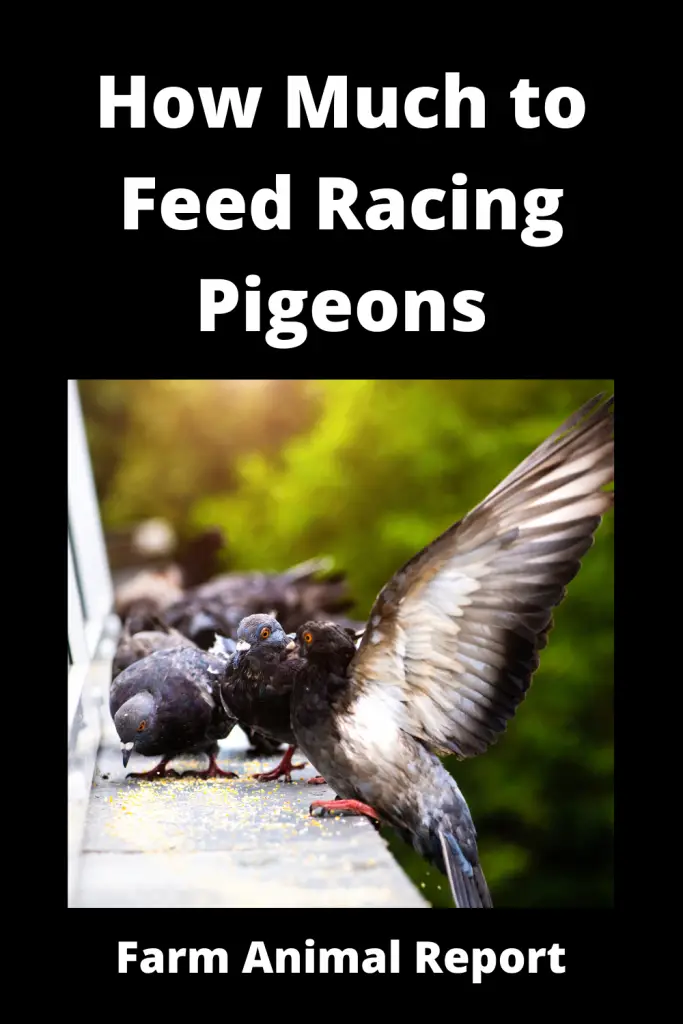
Before Race
Pigeon racing will always get benefit from a head start to fly higher and longer. The birds need to fly for an extended time and need specific feed to obtain energy and power to stay in the sky for extended hours. The feeding should focus on a mix of high carb, protein, and grains for stamina. The loft training should start weeks or months prior to the race day. You should take the aviator athletes a mile away from home in boxes and make them fly home within the least time possible.
During Race
When birds and pigeons are fed with a mix of feeding ingredients, they stay in shape and have a higher level of energy to stay afloat for longer. A pigeon needs extra energy to stay in the air. When you feed a bird with a strict routine and schedule, you will get the maximum performance out of it.
When they are racing, you must ensure that they are regularly hydrated. Avoid giving them water right after their landing. This act of giving water after landing might take their life. Give them some time to relax and later provide them with access to fresh water all the time.
Keep a vigilant eye on their health and look for any sign of respiratory infection or motion. The infection will take its toll, and within days, there are high chances that it could take the life of the infected soul.
After Race
Birds lose fat after extensive loft trading and the real racing event. A well-fed athlete will not lose weight. The mix of feed and care, specifically in the evening, will make your aviator athlete stay fit and healthy after the intense event. The feeding shouldn’t only be comprised of seeds for pigeons. The energy requirements for birds and pigeons vary according to the situation, and you should respond accordingly.
Keep the cup cool and always provide a stress-free environment for them after racing. There are high chances that the immune system of the aviator champion is going through the transition, and you might have to provide them with the vitamins and nutrients to bring them back to normal life. And during this process, the perfect environment will provide them with the required push, and within weeks they will get back to loft training and give you maximum performance in every session.
Types of Feed for Racing / Homing Pigeons
The trainers and fanciers don’t wait for race day and breeding day respectively to start giving fine feed to the chosen ones. the loft training requires every aviator to be fed for the coming race day. The feeding should provide ample fat to eat, survive and thrive.
1. Barley:
It is the considered a natural intestinal cleaner among the coaches who own aviator athletes. The use of barley has been practiced for many scores of years. The barley is given to the birds right after the participation in the event. It cleans the intestine and protects the aviator athlete from the harmful effects of the long flight. There is crude fiber in it, and when you provide it in ample amount, this fibber is visible in the dropping, which makes it difficult for the owners to accept it as a regular diet.
Nutrients are not found in abundance in barley, and it is prohibited by the experts to give barley to the parents who are feeding the young ones. The excess use of barley for the parent will decrease the growth of young chicks to 15%. Expert fanciers use 10% of barely to the sprinters and racers for 4 to 5 days a week.
2. Corn:
The fattiest grain in the category is most loved by pigeons, and it is rich in crude fiber. This is an easily digestible item that you can add to aviator athletes of all sorts. The hard and dry seeds with rattling sounds are considered to be the best for your champions in sprints or other events.
The main drawback of adding this ingredient to daily consumption is that there are two main amino acids missing in it. The absence of tryptophan and lysine makes it somewhat fishy for some owners. But with the help of supplements and other ingredients, the owners are getting maximum results in providing the best diet for their champions.
It should be 25% of the daily consumption for aviator athletes. The use of this ingredient on a regular basis provides nutrients and healthy fiber for young ones and adults. But the ratio must not cross one-fourth of the total offering.
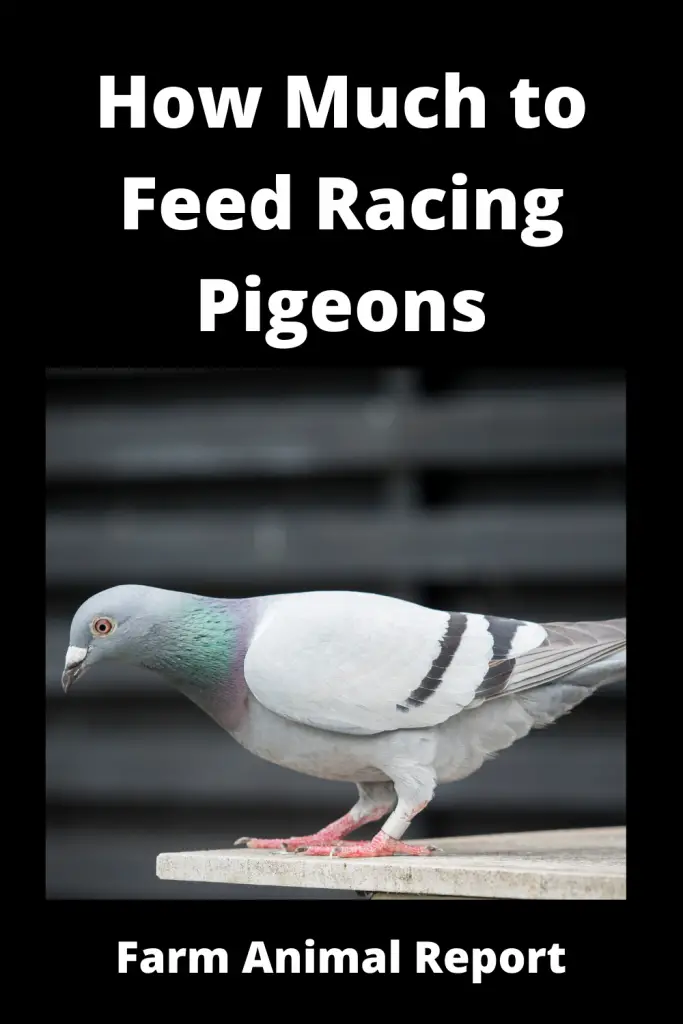
3. Millet:
When you want to add protein to your daily consumption, millet is the best option you can get in the lovable items of your sprint and competing champs. It has more fat, and you can give it to parents who are rearing the young ones. There are no side effects associated with it. The use of millet increases the protein intake, but it has comparatively less fat.
The daily consumption of millet should not increase more than 25 % in the ratio of the daily consumption. When people want to provide a healthy diet to their champions under training, the mix of these grains will provide the essential and necessary intake for making things easy for you and your aviator athletes.
4. Wheat:
The maximum amount of preteen in wheat makes it useful, and your pets love to eat it more than anything. The added protein and less fat with sulfur make it the perfect natural remedy during molting. When you want to offer it on a daily basis to the chamois under training, there are various benefits that will make them perform better than before.
But you must ensure that the ratio of wheat doesn’t cross 25% in the total daily consumption. It is seen that excess use of wheat will increase their weight, and the added weight will make them feel tired, and their performance will suffer the most.
Feeding Guidelines for Chicks / Squabs to Adults
The experienced fanciers know that the cheap feed is not best for the loft. Birds and pigeons flap their wings in the evening and the time when they wake up. If they are not flapping wings, this is a sign of negative energy, lethargy, infection, or diseases. Feeding the young birds is the most daunting endeavor for the owner when there is no pigeon available as a parent.
When aviator athletes start to eat protein and a healthy diet from the very beginning, they can win every race. Body fat is not a guarantee of winning the competition. For example, if an athlete is well fed from the beginning, the training session will pay off to make him the winner. The same goes for the pigeons as well.
The daily intake must be under constant observation according to the calorie consumption and requirements of the trainees. When there are young chicks, mostly the breeding parents rear them. You must avoid giving excess barley to them as it will lower the growth of the chicks. The following formula will provide you with an amalgamation of healthy nutrients.
- 10% barley
- 25 % corn
- 25 % millet
- 25 % wheat
Health Problems Associated with Feeding Racing Pigeons
Feeding pigeons is not the only thing to makes them able to compete in the competition. You need to provide every pigeon with loft training, supplements, and feeding with a strict schedule. The best thing for fanciers in taking care of birds and pigeons for the competition is to offer them a bit of feed to eat, gain fat and participate in the race. Feeding is not the only thing which you can offer to the aviators for competing in the event. Along with the feed, you need supplements and a keen eye to look for any signs and symptoms of the disease.
A well-fed aviator definitely has a strong immune system to ward off some common diseases associated with racing; some of the common ones are:
Respiratory Infections
The most common disease in the high-fly seasons is respiratory infections. It is a terrifying disease for the owners as well. It affects stressed-out, old, and young aviators in the most harmful ways. The respiratory infection affects the breathing and respiration of the birds affecting oxygen intake, and lack of oxygen in the bloodstream makes them tired early. These tired birds cannot fly longer, and you cannot use them in the competition.
The common symptom of this infection is that the aviator will keep the mouth open and will struggle in breathing with a lethargic attitude all day long. The fluff-eyed poor souls will not be able to consume food, and without proper medication, they could die in a matter of days. You need to separate the infected one from the flock at once to prevent the spread of infection to the other members.
Mycoplasma
It is also a cause of respiratory infection; in this condition, the respiratory tract is affected badly, and the symptoms are the same as those of the other respiratory diseases. The extra cues would be the nasal discharge and coughing in the beginning. Stress and tiredness with loss of appetite will make things difficult for the aviator in flying and taking part in the competition. When the aviator athlete is suffering from this infection, the performance will go down, and within days it could cause death. The best thing you can do is to offer the infected one the stress-free ideal environment with medication and care.
Chlamydia
There are various variants of chlamydia in the member of the aviator family. Chlamydia is a disease that sometimes doesn’t show any infection at all, and you only know about the virus when the flock is suffering from the infectious disease. The best thing to keep chlamydia away from the loft is to provide them with the ideal and stress-free environment. There is no cure for this respiratory disease. But with the help of medication and care, you can make them suffer less and grow healthy once again.
Final Thoughts– What do Racing Pigeons Eat?
The best thing about the homing aviators is that they reach the exact location every time you throw them in the air, regardless of the starting point. Racing birds and pigeons need extra energy and fat to race.
They cannot fly hungry, protein will fulfill the energy requirements, but they also need high carb feed to stay afloat. Birds and pigeons for loft and race need scheduled feeding with various grains and supplements to be able to fly higher, longer, and win the race.
Racing pigeons are a special breed of domesticated pigeon that has been bred for speed and endurance. These birds are typically fed a diet of grains, seeds, and dried pellets, which provides them with the nutrients they need to fly long distances.
Some racing pigeon fanciers also add supplements to their birds’ diet, such as vitamins and electrolytes, to help ensure that they are in top condition for races. While racing pigeons can eat many different types of food, it is important to make sure that they have a balanced diet in order to stay healthy and perform at their best.


